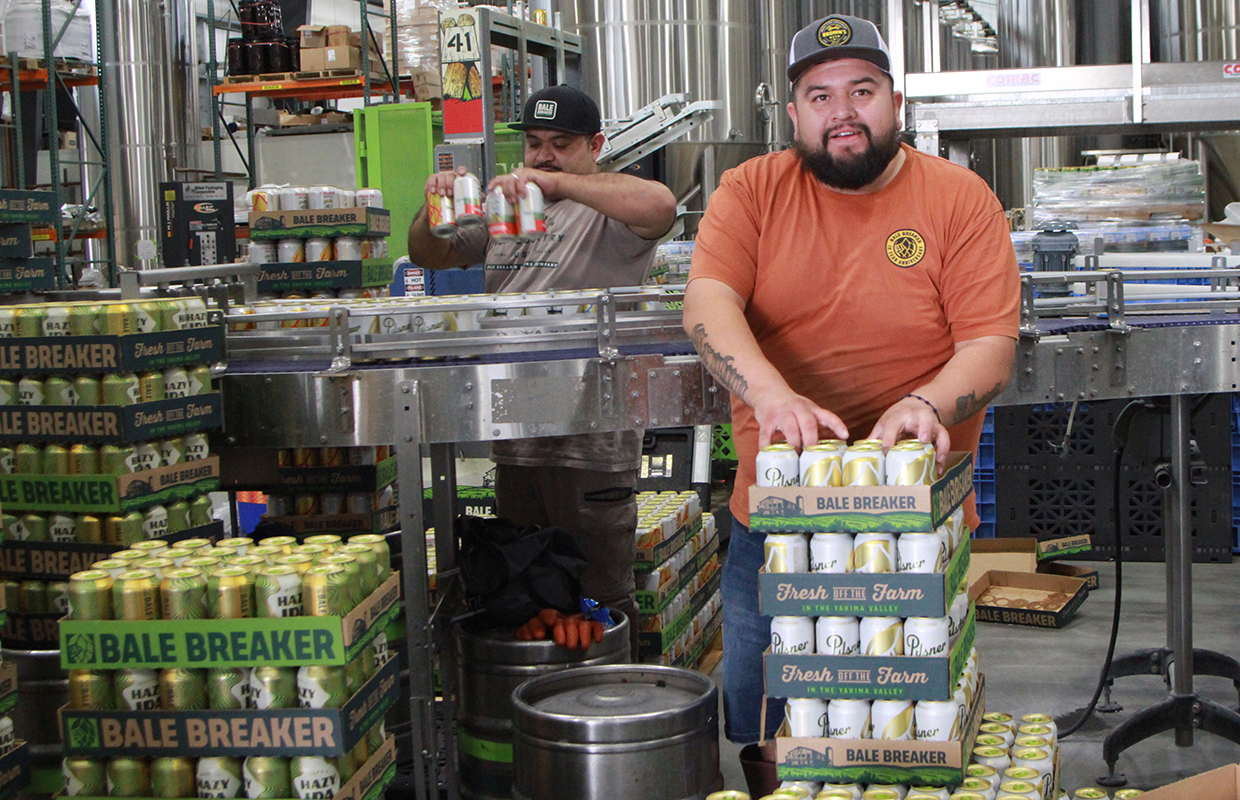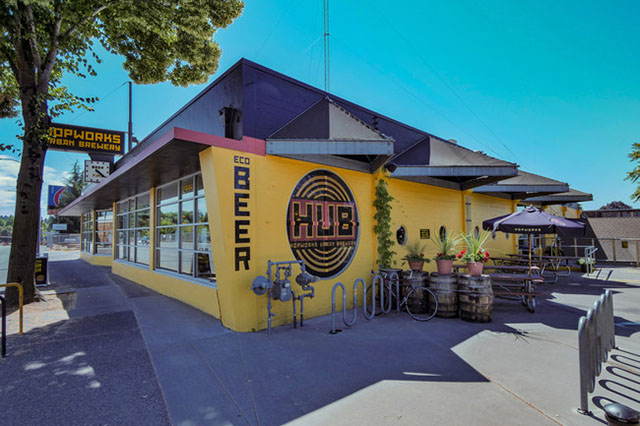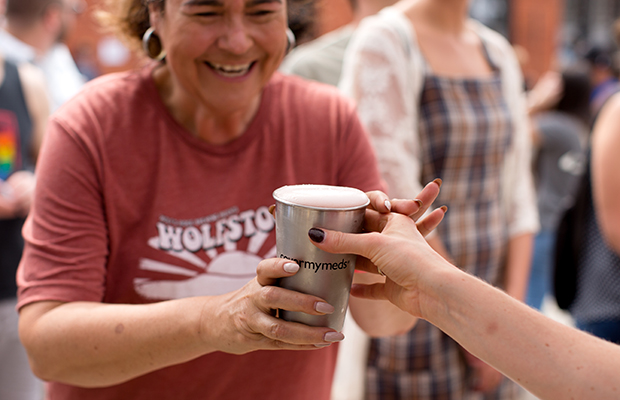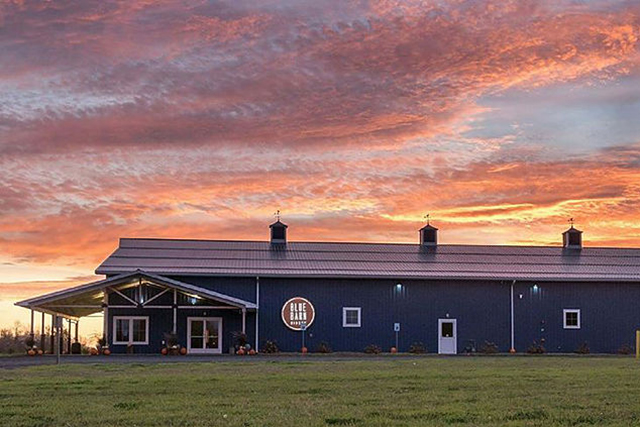
When Yakima’s Bale Breaker began to launch, co-founder Kevin Smith said they were thinking about what they wanted to do
“We wanted to be a production brewery, but we didn’t really want to be this regional or national entity,” he recalled from before the brewery opened in 2013. “The thought was always to try to emulate New Glarus. They sell a couple 100,000 barrels, but we didn’t have that much population. We knew if we were going to have to max out the expansion, we were going to have to expand territory a little bit.”
Smith acknowledged that the craft beer landscape has changed considerably in 10 years during the interview with sister Meghann Quinn and her husband Kevin, also co-founders. They spoke on this during the November/December cover story interview of Brewer Magazine.
READ MORE: Sharing the Wealth: The Lessons & Resources Bale Breaker Learned, Shares from Yakima
There were a handful of small breweries in Spokane, Meghann said, so the family that already was in the beer business via being a hop farm saw that there was a need for more craft beer in the Yakima Valley.
“Also just in Eastern Washington,” she said. “We wanted to kind of tell the story of the Yakima Valley, and the hop farming history. We also wanted to start trying to make Yakima to be known as a beer destination, as well as a hop destination.”
Kevin Quinn said they would start to interview distributors but would get pushback on their goal.
“We knew we needed to get distribution,” he said. “They were like, oh, you can’t only sell beer east of the Cascades. This isn’t a craft beer country.”
Meghann quipped, “They said, ‘Well, I guess if you’re gonna fail, might as well fail big,’ … or something like that.”
They didn’t choose that distributor.
“We had another distributor tell us, ‘Oh, you only opened with 3,000 barrels of capacity? We can sell all that east of the Cascades.’ And they did,” Kevin Quinn said. “We ended up having to triple capacity over the first year before we could then enter Western Washington. And when we did we only opened King and Snohomish County — the greater Seattle area — while waiting for more tanks.”
Although still primarily selling to the whole state of Washington, Bale Breaker sends around 15% of its distributed beer into Oregon and Idaho as well.
“We’re looking at some other markets,” Smith said. “I think to the seasonality of just being in the Pacific Northwest, there’s a lot of beer sold in six months from the spring to early fall. Then there’s a lot less beer sold from fall through winter.
So we’re figuring out a way to kind of even out those numbers because we’ll brew at capacity — we have about 40,000 barrels of capacity right now — and we’ll brew 800 barrels a week for a couple of months in the summer. Then in the winter, we never brew 800 barrels per week. We’re at capacity for these small periods of time. We ended up having to add two more tanks this year with the new brands and we still filled that for a couple months, but the other 10 months, we’re not at capacity.”





Be the first to comment